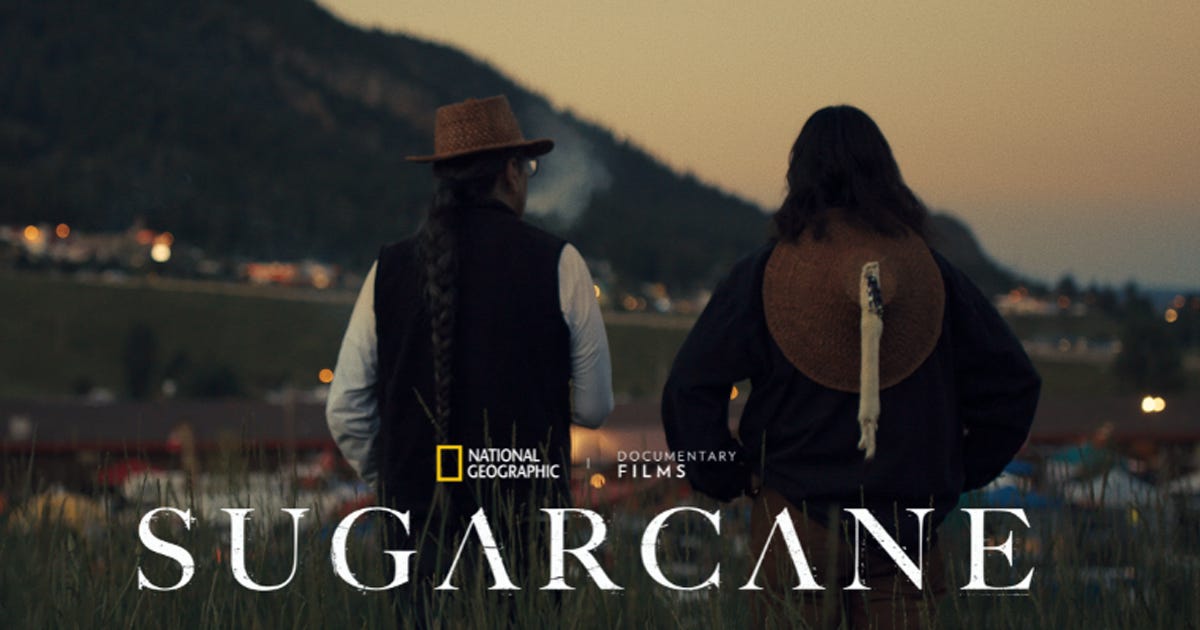ANALYSIS: What the Oscar-nominated documentary Sugarcane gets wrong
"Far from being Oscar material, Sugarcane casts a further stain on Canada’s international reputation regarding residential schools."
Author: Michelle Stirling
Sugarcane, a Canadian-made film, is up for the Best Documentary Feature Oscar at next month’s Academy Awards. It has already won two 2024 Critics Choice awards and a Sundance Film Festival Best Documentary Director award. It has also earned rave reviews from the New York Times, Variety, The Guardian, and the Christian Science Monitor. It is now available on Hulu and Disney+ streaming services, distributed by National Geographic.
But despite its status as an Oscar-nominated documentary backed by the authoritative National Geographic brand, the movie is in fact an artfully arranged assemblage of misdirection and manipulation, with a pile of key facts lying discarded off-screen. Viewers should trust very little of what they see.
The title refers to the Sugarcane Indian Reserve near Williams Lake, British Columbia, home to the Williams Lake First Nation and Cariboo Indian Residential School, commonly known as St. Joseph’s after the original Catholic mission. Amid three interconnected plotlines, the film promotes the idea that Roman Catholic priests were impregnating Indigenous students at the school and then burning the unwanted babies.
In one plotline, co-director Julian Brave NoiseCat and his estranged father Ed Archie NoiseCat, who was born at St. Joseph’s under mysterious circumstances, seek mutual reconciliation.
In one scene, a brief image of an archived news article from the Williams Lake Tribune clearly explains the details of Ed’s birth. In 1959, a dairyman at St. Joseph’s was returning home late one night when he heard sounds coming from an outdoor garbage burner, where he found a newborn baby in an ice cream carton. The newspaper story recounts the trial of a 20-year-old unwed mother charged with abandoning that baby. She would eventually serve a year in jail for her crime. Her baby was Ed Archie NoiseCat.
Antoinette Archie was that mother, and she was 20 years old when she gave birth. Twenty-year-olds could not attend residential school; students had to leave at 16. And there is no mystery about the identity of Ed’s father. And no priests were involved.
Unknown to viewers of Sugarcane, Ed’s father was Ray Peters; he was a rodeo rider, owner-operator of a backhoe business and member of the Lil’wat Nation. Peters lived on the Canim Lake Reserve and subsequently married Antoinette; the couple had seven more children together and remained married until Peter’s death in 2005. And while Julian has written extensively about his father and grandfather online, none of this information makes it into the film.
That Ed was born at St. Joseph’s appears to be sheer happenstance. According to the Williams Lake Tribune article, the unwed mother explained at her trial that she had gone from “Williams late [sic] to the residential school where she delivered the birth of her child at about 11:20 pm.” She probably hoped to get help at the school, but it was summer and few people were there. Thus, she delivered the baby alone, using the nursing skills she’d learned in a practical nursing course in Vancouver.
A second storyline concerns an investigation into priestly misdeeds. This includes the case of Father Hubert O’Connor, an Oblate priest who was the principal at St. Joseph’s. He violated his vow of celibacy by having an affair with Phyllis Bob, a 22-year-old Indigenous woman who worked at the school as a seamstress. Phyllis became pregnant, and the baby was subsequently given up for adoption. However, this story doesn’t prove anything about Ed’s parentage, nor establish a pattern of sexual abuse of students and infanticide at the school.
The third storyline, also marred by misdirection, concerns Rick Gilbert, former chief of the Williams Lake First Nation. In one key scene, Rick and his wife Anna review results of a DNA test on their laptop that shows his ethnic heritage to be 50 percent Irish, 45 percent Indigenous and 5 percent Scottish. Up pops an image of a potential “cousin” named Brian McGrath. Rapid editing then takes us to a photo of an Oblate priest standing with a group of boys at St. Joseph’s. His name? Father James Michael McGrath. “See!” cries Anna.
But no convincing evidence is presented that links Father James McGrath to Brian McGrath, or that Rick Gilbert is related to either of them. Nonetheless, the documentary-makers want us to believe Gilbert was fathered by Father McGrath. Rick’s mother was 18 at the time of his birth and not a student at the school, another thing viewers never learn.
Sugarcane abets baseless allegations by repeatedly claiming discovery of a systematic process of baby incineration where none exists. The film does include several lurid claims based on childhood memories. But as police and lawyers know, such eyewitness testimony is notoriously unreliable without supporting hard evidence. And beyond Ed Archie NoiseCat’s brief time spent in a garbage burner due to his mother’s desperation, there’s no proof presented that any other babies were ever placed there.
Far from being Oscar material, Sugarcane casts a further stain on Canada’s international reputation regarding residential schools. Sugarcane cannot properly be called a documentary; in a documentary, facts are supposed to matter. Given the recent spate of church burnings and vandalism, this film is properly considered a dangerous blood libel on Canada, and a deep embarrassment to the good name of National Geographic.
Michelle Stirling is producer/writer of the recent counter-documentary The Bitter Roots of Sugarcane. She blogs at www.michellestirling.com. Based on research by Nina Green.
The original, longer version of this story first appeared at C2CJournal.ca


